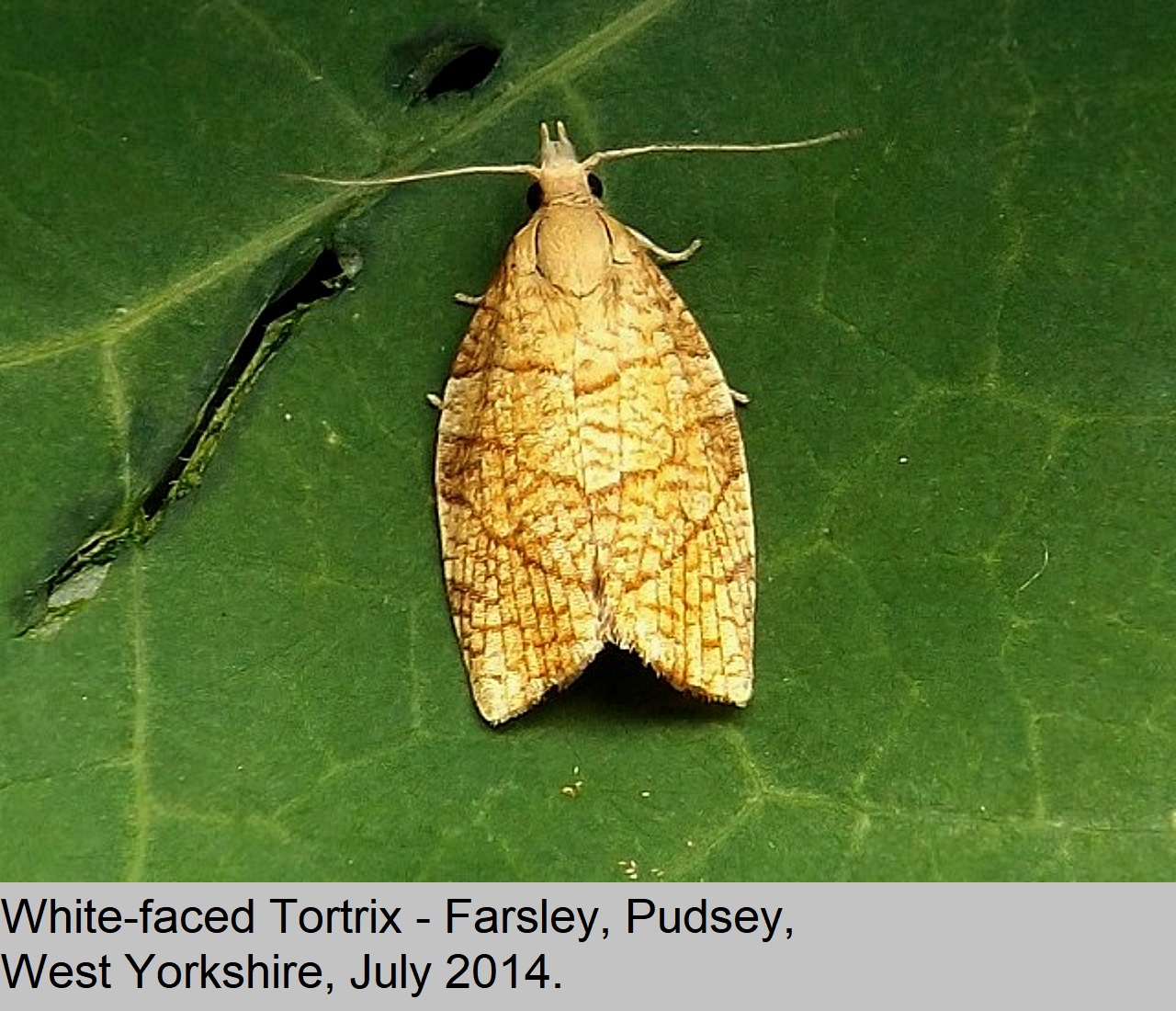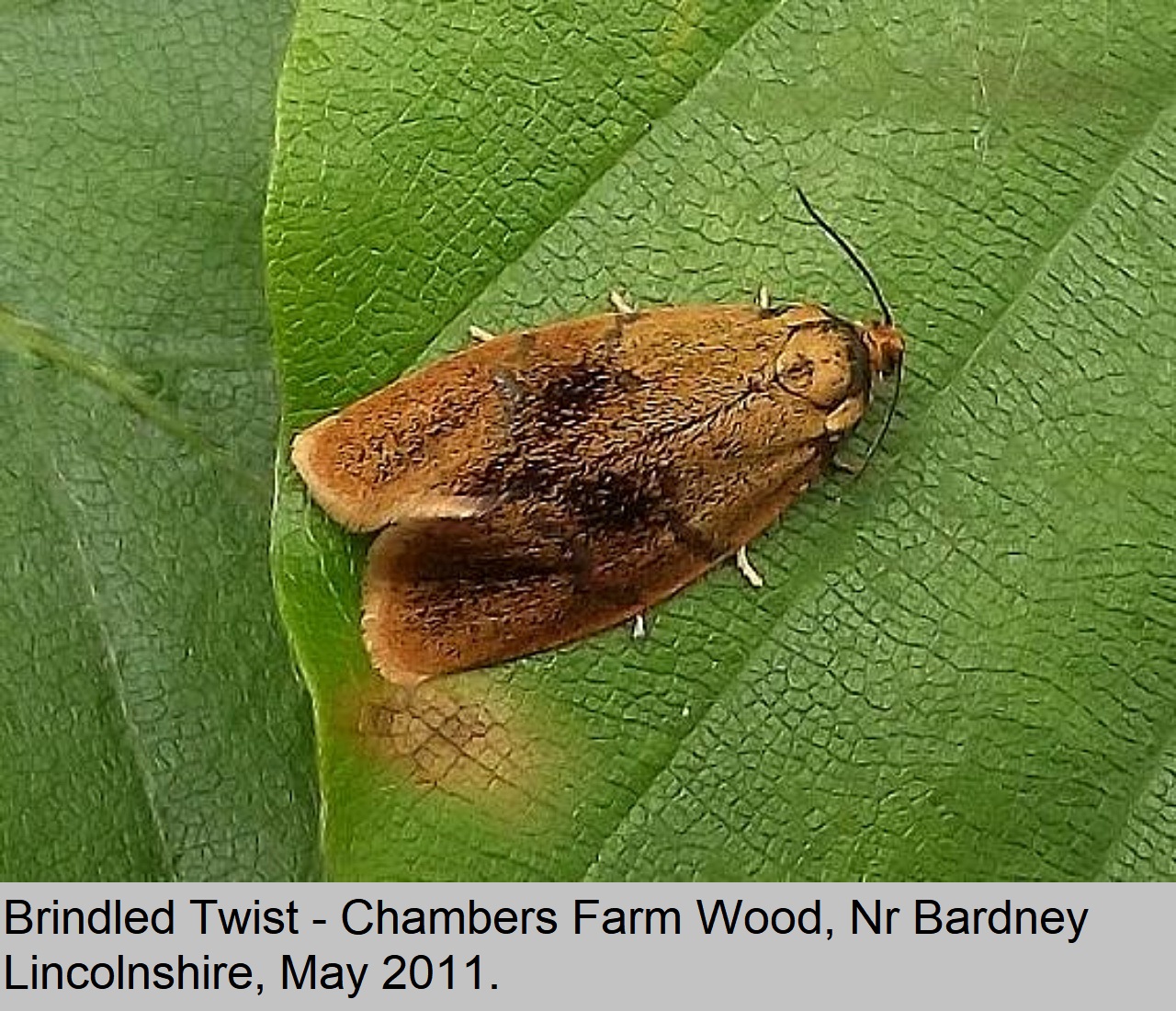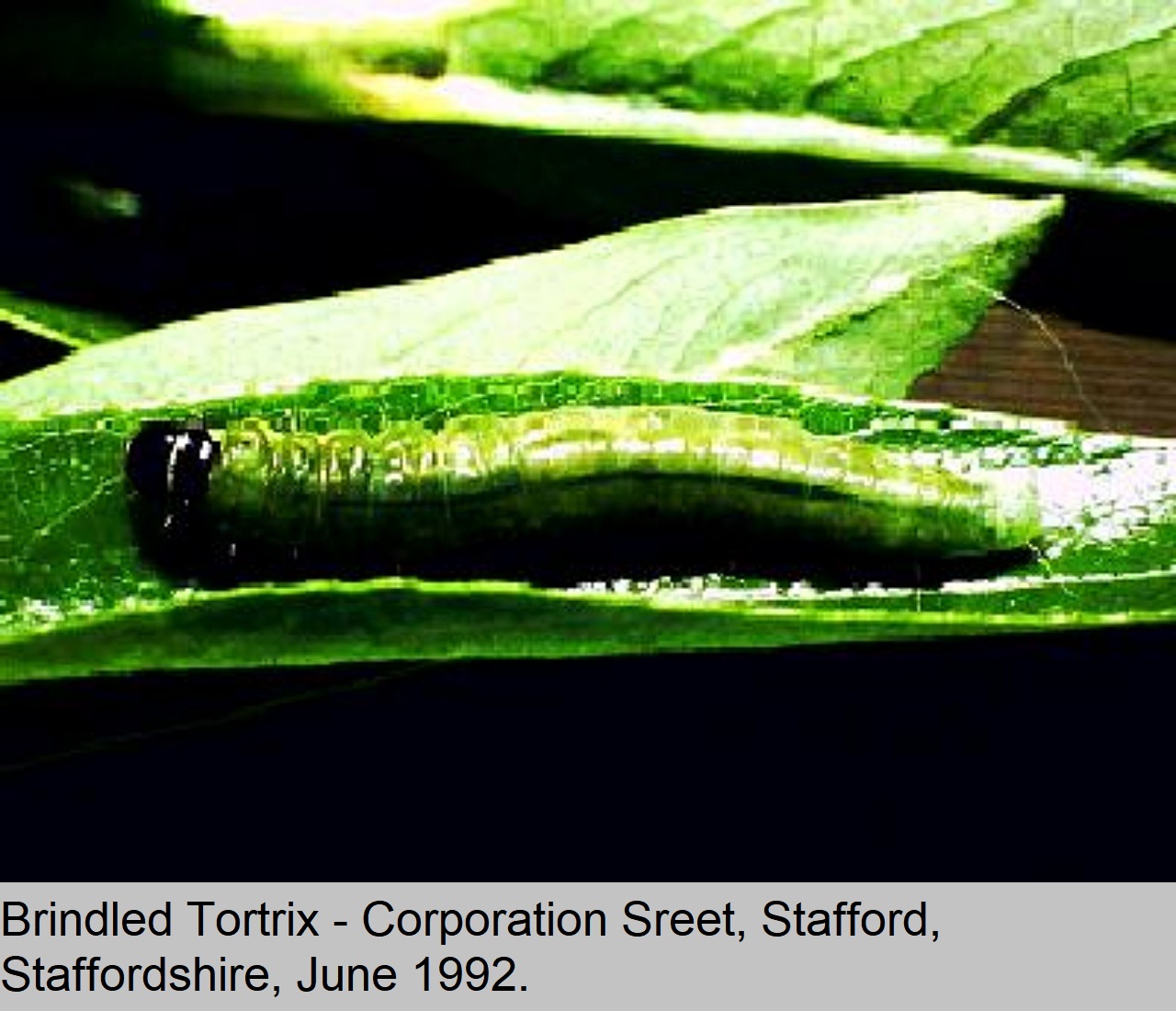|
|
||||||
|
|
|
|||||
| (Haworth 1811) | (Haworth 1811) | (Haworth 1811) | (Denis & Schiffermuller) | (Denis & Schiffermuller) |
| Tortricidae - Tortricinae | Tortricidae - Tortricinae | Tortricidae - Tortricinae | Tortricidae - Tortricinae | Tortricidae - Tortricinae |
| Red-barred Tortrix | Red-barred Tortrix | Red-barred Tortrix | Dark Fruit-tree Tortrix | Dark Fruit-tree Tortrix |
| Diluta angustiorana | Diluta angustiorana | Diluta angustiorana | Pandemis heparana | Pandemis heparana |
| 49.004 BF 1010 | 49.004 BF 1010 | 49.004 BF 1010 | 49.026 BF 972 | 49.026 BF 972 |
 |
 |
Status: Resident in UK. Wing Span: 12mm to 18mm. Flight Period: June and July, sometimes flying in sunshine. Habitat: Various place with trees and shrubs, on which the larvae feed. Comment: This moth is quite common throughout Britain, but less common in the far north. Males have more consistent markings than females. |
|
Status: Resident in UK. Wing Span: 16mm to 34mm. Flight Period: June through until August. Habitat: Most places where fruit trees grow, which are the larval food plants. Comment: This species is common and widely distributed throughout England, Wales and some parts of Scotland. |
| (Scopoli 1763) | (Scopoli 1763) | (Scopoli 1763) | (Treitschke 1830) | (Treitschke 1830) |
| Tortricidae - Tortricinae | Tortricidae - Tortricinae | Tortricidae - Tortricinae | Tortricidae - Tortricinae | Tortricidae - Tortricinae |
| Large Fruit-tree Tortrix | Large Fruit-tree Tortrix | Large Fruit-tree Tortrix | White-faced Tortrix | White-faced Tortrix |
| Archips podana | Archips podana | Archips podana | Pandemis cinnamomeana | Pandemis cinnamomeana |
| 49.013 BF 977 | 49.013 BF 977 | 49.013 BF 977 | 49.023 BF 971 | 49.023 BF 971 |
 |
 |
Status: Resident in UK. Wing Span: 18mm to 26mm. Flight Period: May through to September. It is uncertain whether this is a single brood with a protracted emergence, or two over lapping broods. Habitat: Most low lying places with fruit trees. Comment: This moth is fairly common in England and Wales on low lying ground. It is scarcer in Scotland. |
 |
Status: Resident in UK. Wing Span: 18mm to 234mm. Flight Period: June and July. Habitat: Parks, gardens and woodland, and shrubby places. The larvae feed on a wide variety of trees and shrubs. Comment: This species is quite localised in England and Wales. |
| (Linnaeus 1758) | (Linnaeus 1758) | (Linnaeus 1758) | (Linnaeus 1758) | (Linnaeus 1758) |
| Tortricidae - Tortricinae | Tortricidae - Tortricinae | Tortricidae - Tortricinae | Tortricidae - Tortricinae | Tortricidae - Tortricinae |
| Brindled Tortrix | Brindled Tortrix | Brindled Tortrix | Brindled Tortrix | Brindled Tortrix |
| Pytcholoma lecheana | Pytcholoma lecheana | Pytcholoma lecheana | Pytcholoma lecheana | Pytcholoma lecheana |
| 49.022 BF 1000 | 49.022 BF 1000 | 49.022 BF 1000 | 49.022 BF 1000 | 49.022 BF 1000 |
|
|
 |
 |
 |
Status: Resident in UK. Wing Span: 16mm to 20mm. Flight Period: June and July. Habitat: Most places with trees and shrubs, upon which the larvae feed. Comment: Fairly common in England and Wales, and more localised in Scotland. The metallic scales are not apparent until the moth ages a day, or two. |
| (Fabricius 1794) | (Fabricius 1794) | (Fabricius 1794) | (Hubner 1799) | |
| Tortricidae - Tortricinae | Tortricidae - Tortricinae | Tortricidae - Tortricinae | Tortricidae - Tortricinae | Species 49.029 to 49.043 |
| Chequered Fruit-tree Tortrix | Chequered Fruit-tree Tortrix | Chequered Fruit-tree Tortrix | Dark-barred Twist |
continued on the next page |
| Pandemis corylana | Pandemis corylana | Pandemis corylana | Syndemis musculana | |
| 49.024 BF 969 | 49.024 BF 969 | 49.024 BF 969 | 49.028 BF 986 | |
|
|
|
Status: Resident in UK. Wing Span: 18mm to 22mm. Flight Period: July and August. Habitat: Parks, gardens and woodland, and shrubby places. The larvae feed on a wide variety of trees and shrubs. Comment: This moth is fairly common over most of the British Isles. |
 |
Status: Resident in UK. Wing Span: 15mm to 22mm. Flight Period: April through to June. Habitat: Parks, gardens and shrubby places. The larvae feed on a wide variety of trees and shrubs. Comment: This is one of the largest tortrix moths, and is fairly common, throughout the UK.. |
|
Contact Website Manager dave.hatton29@btinternet.com |
Web Designer Dave Hatton |
Dave Hatton reserves the copyright on all images. © 2022 |
||||||